Index
- Improvements to DMR Public Health's shellfish legal notices and web-based map content
- Hermit Crabs in Georgetown: New Neighbors or Familiar Fellows?
- Improved ASP Testing Reduces Closure Periods, Precautionary Closures
- The Ever Growing Resilient and Dynamic Shellfish Industry
- Thank you to all our 2020 Volunteers!
- Introducing the Mud Flat
Improvements to DMR Public Health's shellfish legal notices and web-based map content
By Ben Wahle, Marine Resource Specialist
To protect public health, the Maine Department of Marine Resources (DMR) closes Maine waters to shellfish harvesting where elevated fecal coliform bacteria, toxin-producing microalgae (biotoxin), rainfall-driven non-point source pollution events (flood), or wastewater pollution sources are present. Bacterial closure information is primarily communicated to stakeholders (professional harvesters, farmers, subsistence harvesters, etc.) through published legal notices and a web-based interactive map on the DMR website. Biotoxin and flood-related closures are communicated through online legal notices. Map and legal notice formatting issues, combined with social factors limiting access to and interpretation of regulatory information, have occasionally created confusion among stakeholders about the location and extent of shellfish closures. DMR is currently modifying its bacterial closure notice system and web-based interactive map to improve access and interpretation of shellfish closure information.
DMR's current bacterial closure notices describe bacterial closures within a coastwide series of areas called Pollution Areas (Figure 1). Each legal notice represents one Pollution Area, and includes a written legal document accompanied by a map. In the written section, closures are typically coded alphabetically, with each letter corresponding to a classification (closure) type (e.g. A = Prohibited, B = Restricted, C = Conditional). The geographic extent, classification, and special conditions of each closure is described. In the map, closures are symbolized according to classification and labeled with the closure code.
A stakeholder needs assessment led by Dr. Tora Johnson at the University of Maine Machias (Johnson et al, 2019) provided DMR with quantitative and qualitative information about how stakeholders access and interpret shellfish closure information and highlighted specific stakeholder concerns over DMR's current legal notice format. The study found that bacterial Pollution Area maps vary in scale and extent and are not consistently labeled in detail, making it difficult to interpret the extent of closure boundaries in some maps. This was also true of biotoxin and flood closure maps, which typically portray large parts of the coast. Some Pollution Areas overlap, causing confusion because a shellfish closure can be depicted in two maps but only labeled in the Pollution Area it is technically assigned to. There are also gaps between some Pollution Areas where state waters are not depicted in any legal notice map. This is problematic because aquaculture lease applications must report the Pollution Area where a proposed lease is located. While most bacterial closures were coded using the alphabetical coding system, older bacterial closure notices used a different format. For some stakeholders, these issues were exacerbated by social issues including illiteracy, aging, and lack of access to technology, which limited their ability to access and interpret regulatory information.
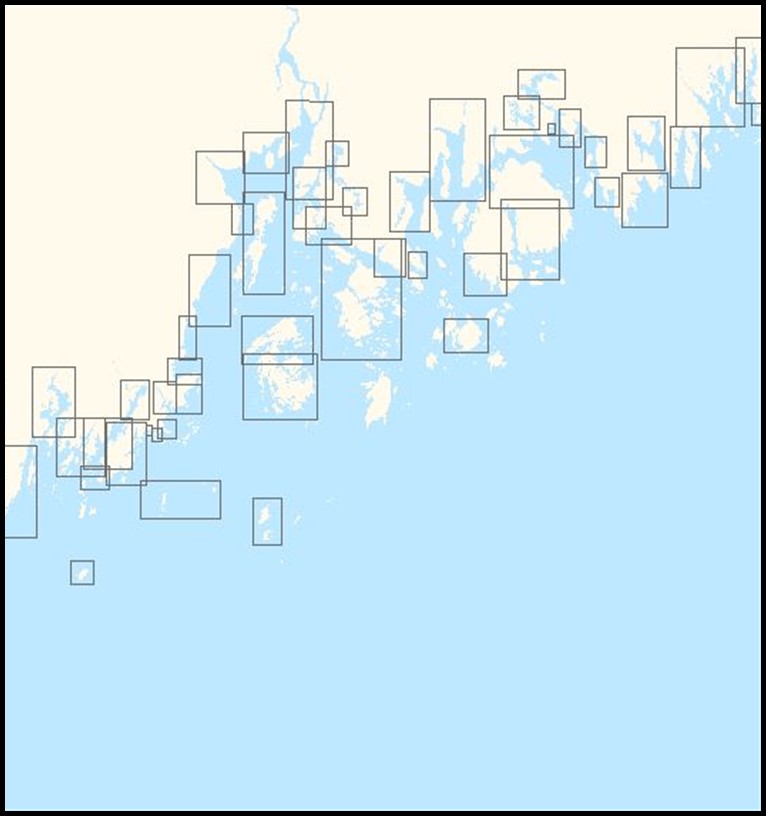
Figure 1. Pollution Areas series along the Maine Coast (note gaps and overlaps between areas)
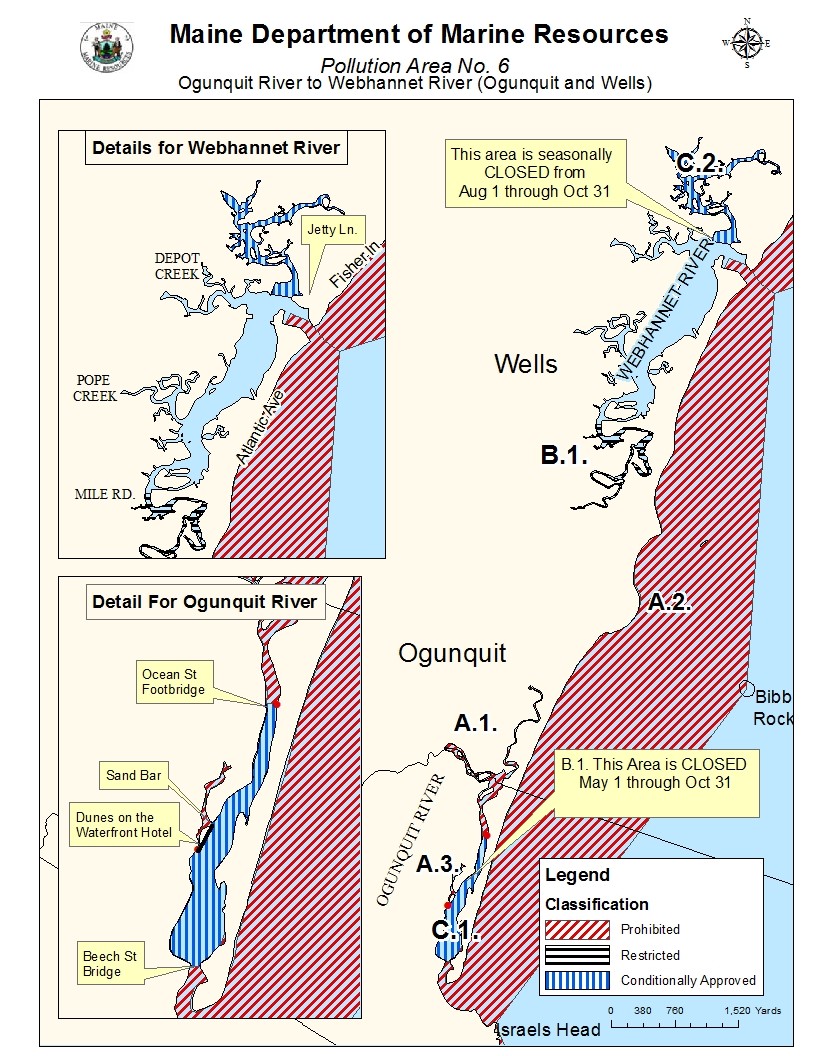
Figure 2. Example of current bacterial closure notice map depicting Pollution Area 6 (Wells/Ogunquit)
In response, DMR is modifying its bacterial legal notice maps to address some of the problems reported by stakeholders in the Johnson study. The interactive webmap is being augmented to provide access to additional shellfish closure information. Major changes are described below:
- Maps: The Pollution Area system of maps for bacterial closure notices is being replaced by a coastwide system of areas called Growing Areas (Figure 3). This system is currently used by DMR to divide the coast for administrative purposes, so it made sense to adopt this system for bacterial closure notices as well. Growing Areas roughly represent large estuaries, bays, and distinct island groups, and provide coastwide coverage of state waters with no gaps or overlaps. Most Growing Areas are significantly larger than any Pollution Area, so each legal notice will now include multiple maps: one growing area-wide map, accompanied by one or more detailed inset maps at a scale of 1:24,000 or below (Figure 4). These insets will depict closures whose boundaries cannot be interpreted at the Growing Area scale and will be labeled in enough detail to locate closure boundaries in relation to landmarks described in the written notice. Standardized formatting for labels and symbols will be consistently applied. Dr. Johnson is consulting with the DMR to apply best practices in cartography to make these maps interpretable for a broad audience, including map-users with deuteranopia (colorblindness).
- Written Notices: The alphabetical system of classification coding is being replaced by a more user-friendly system using abbreviations of each classification-type (e.g. P = Prohibited, R = Restricted, CA = Conditionally Approved, etc.). This new coding system will be standardized across all bacterial closure notices. Different Conditional Area types will be grouped together.
- Webmap: DMR's interactive webmap, which currently depicts bacterial and municipal shellfish closures, will soon show biotoxin and flood-related shellfish closures as well. These closures are dynamic, and changes in closure-extent will be depicted on the webmap as they occur. Additionally, the Growing Area boundaries have been made viewable on the webmap, so aquaculturists can use this as a tool to report Growing Areas on future lease applications.
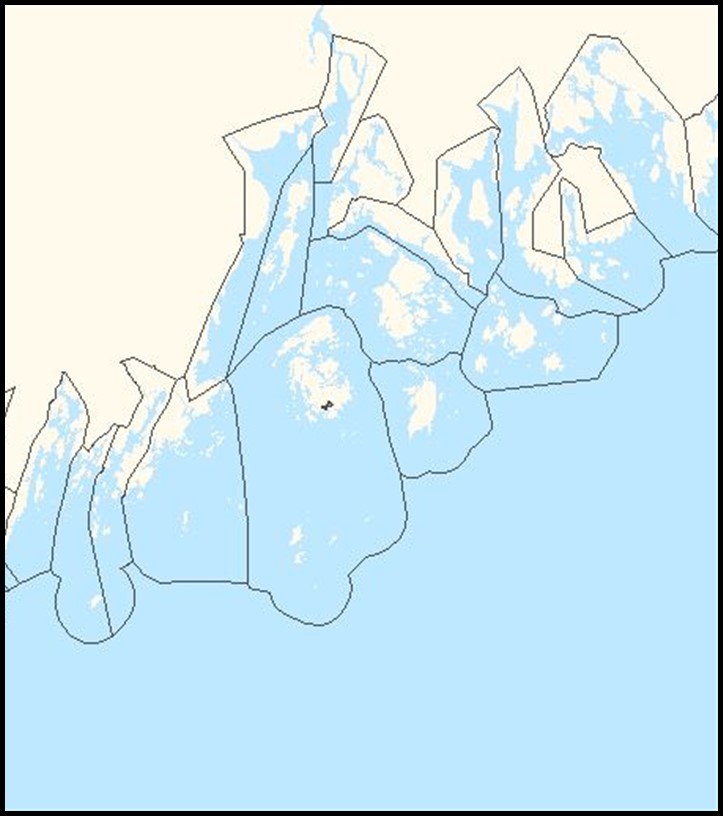
Figure 3. Growing Area system (note continuous coverage of state waters without gaps or overlaps)
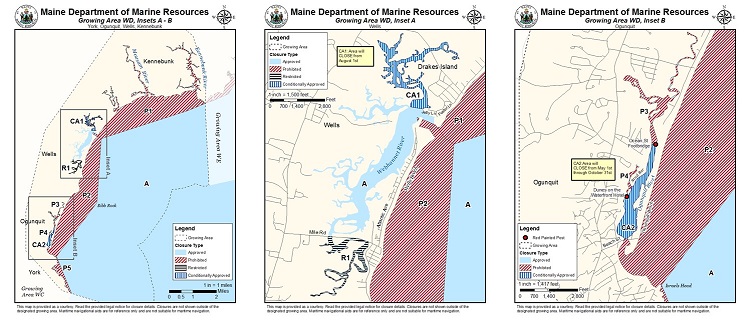
Figure 4. Example of new bacterial closure notice map format depicting Growing Area WD (Wells/Ogunquit)
This work is currently underway and is expected to be publicly released in early 2021. Thanks to Dr. Tora Johnson, Rory Morgan, Katherine Pontbriand, and McKenna Roden from the University of Maine at Machias for providing actionable information that guided this project. Special thanks to Nicole Ritchey, Ruby Dener, and Adrienne Tracy, and Meryl Grady from the Maine Department of Marine Resources for their work on maps and legal notices.
References:
Johnson, T., Rory Morgan, Katherine Pontbriand and McKenna Roden. (2019) Evaluating the Effectiveness of Shellfish Legal Notices. A report to the Maine Department of Marine Resources.
Hermit Crabs in Georgetown: New Neighbors or Familiar Fellows?
By Ari Leach, DMR Area Biologist
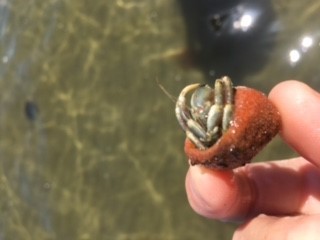
The intertidal zone and tide pools of Maine's coastline have long captured the interest of children and adults alike. From the indigo blue mussels to the wide array of seaweeds, this micro ecosystem contains a myriad of lifeforms, many of which are familiar to us. Part of this ecosystem also consists of many mobile creatures including the invasive European Green Crab and the Long-clawed Hermit Crab. The Long-clawed hermit crab has been recorded from the Gulf of Mexico to the warmer waters of Nova Scotia. In recent years here in Maine, there have been discussions revolving around whether this small crustacean has historically been found in Maine waters or if they are new arrivals.
In one cove in Georgetown, a resident has been keeping track of the crabs, recording observations that indicate the crabs have migrated further into the channels and inlets of Sagadahoc Bay, covering the flats and preying upon the periwinkle population. To better understand the historical ecology of the bay, I ventured to his home and toured the channels and flats of concern. As we walked further out into the permanently watered channel, I noticed an increase in Long-clawed hermit crab density, as well as occasional groupings of crabs that were seemingly preying upon the smallest of their kind.
The concerned homeowner accompanying me mentioned that he had noticed the crabs eating algae off discarded shells. The crabs hold onto old shells with one claw and the other claw works nonstop to scrape away the algae. While hermit crabs are omnivorous, it is not uncommon that they will pursue and consume other hermit crabs. The bigger question at hand was whether these hermit crabs have always been present in Sagadahoc Bay and other parts of Maine, or whether they have migrated north from more southern coastlines.
As it happens, Long-clawed hermit crabs have been documented in Maine for many years and are not new to our Maine waters. The abundance of these animals in various waterbodies may have increased over time. While they are omnivorous, there is little documented evidence that they negatively impact the softshell clam spat, but it behooves us to start monitoring these critters in the future. These observations are important for managers to consider, particularly given Maine's vast coastline and islands. As the coastal waters of our state continue to change, it will remain important to connect with resource managers and citizen scientists in order to gain a broad picture of how our marine organisms are impacted.
Improved ASP Testing Reduces Closure Periods, Precautionary Closures
By David W. Miller, DMR Growing Area Program Supervisor
Amnesic Shellfish Poisoning (ASP) continues to be an annual threat to bivalve shellfish harvest in Maine. The toxin (domoic acid) responsible for ASP is produced by some species of the marine phytoplankton Pseudo-nitzschia. Since bivalve shellfish feed by filtering phytoplankton from the water column the toxin, when present, is assimilated and concentrated into shellfish tissue whenever they are feeding. Even when cooked, the toxin remains in the shellfish and if eaten in sufficient quantities, will result in ASP. The details of the Pseudo-nitzschia bloom and ASP in Maine are aptly identified and described in the Maine Department of Marine Resources (DMR) Summer 2019 newsletter.
Research to understand the dynamics of this toxin along the Maine coast continues within the Maine DMR and with its collaborators. Maine DMR has a robust and comprehensive sampling program throughout all State coastal waters with shellfish tissue samples collected weekly when Pseudo-nitzschia population levels are met or exceeded. Results of this sampling program have made it abundantly clear that once toxin production begins it is rapidly assimilated by shellfish into their tissue. In response to realization of the rapid assimilation rate the Maine DMR directed efforts to increased internal laboratory analytical capabilities.
The capacity expansion was first accomplished in 2017 when the Maine DMR leveraged grant money from the Maine Outdoor Heritage Fund to purchase a High Pressure Liquid Chromatography (HPLC) machine. This laboratory equipment has the precision necessary to quantify the established minute closure toxin threshold concentrations. Housed at the Maine, DMR Bureau of Public Health, Water Quality/Biotoxin Laboratory in Boothbay Harbor this machine dramatically shortened result time and subsequently response time in western Maine. However, samples collected in eastern Maine, where ASP blooms tend to be more frequent and prolonged, needed to be collected and transported to Boothbay Harbor for analysis. This necessary transport activity delayed result timing leading to delays in potential harvest area openings and increased duration of precautionary closures.
The Maine DMR recognized this efficiency short-coming and in late 2019 leveraged money from the Maine DMR Opportunity Fund to purchase an HPLC machine and located it at the Water Quality/Biotoxin Laboratory in Lamoine. Staff training and laboratory modifications led to full operational HPLC capability in 2020. Acquisition of this machine doubled the Department's analytical capacity and strategic placement of this equipment dramatically reduced sample result response time. Results from ASP tissue samples collected in eastern Maine are now obtained approximately 24 hours and even up to 48 hours quicker than in previous years. While making the process much more efficient, the primary benefit is the Maine DMR now has the tools necessary to make sample result decisions quicker which has led to reduced biotoxin closure periods and fewer precautionary closures.
The Ever Growing Resilient and Dynamic Shellfish Industry
By James Becker - Seafood Technology Supervisor
Despite Covid 19, the Maine shellfish industry and state of Maine Shellfish Sanitation Inspection Program stayed on their feet and rolled with the punches of 2020. Not only did they adapt and continue forward but stood up to an unprecedented crisis. Inspections were completed on-time and Maine shellfish continued to hit the markets.
I stepped into the roll as the supervisor of the DMR's shellfish inspection program in early March of this year, three days before the first case of Corona Virus hit Maine, sending the state and this program into a tailspin of health and economic anxiety. We were immediately faced with big questions and concerns. Some being, could we inspect all of Maine's shellfish dealers on time, properly, and most importantly, safely? At that point, we had no idea how the virus would impact our inspection program or the shellfish dealers. Luckily, I supervise three experienced shellfish inspectors with a vast knowledge and understanding of this important industry. Our dealers helped keep our inspections moving by allowing us entry into their facilities to keep them in compliance with regulations necessary for selling and shipping shellfish. We all donned masks, used gallons of hand sanitizer, and implemented social distancing. Now, at the end of one of the most difficult years in decades, our shellfish dealers successfully operated and adapted to keep product moving to markets in-state and out.
Surprisingly, during such a chaotic and troubling year, the Maine shellfish world continued to grow, with new ideas, new dealers and retailers popping up and eager to join this expanding industry. Some business ideas were ingenious and elaborate, to say the least. One group of folks put together a spa and bar, selling oysters retail, the first of its kind in Maine. While the first state-of-the art high pressure processing machine was rolled out for refining mussels for distribution. Dealers joined forces to split costs and add efficiency across shared business models and facilities. Furthermore, dealers were given the opportunity to apply to ship product to the EU, opening a whole new market in 2021. Things kept moving along, regardless of the circumstances.
In the face of a worldwide pandemic and decimated economy, not overlooking the Maine shellfish industry, people were innovative, patience and durable, while our Shellfish Sanitation Inspection Program didn't miss a beat.
I look forward to a safe and more settled 2021 and wish the best for Maine's valuable shellfish dealers and the shellfish sanitation program.
Happy New Year.
Thank you to all our 2020 Volunteers!
By Amy Webb - DMR Laboratory Technician
The DMR relies on trained volunteers to assist with seawater collection and phytoplankton identification. As of early December, 21 water quality volunteers had collected approximately 1,333 water samples by land and sea. That is over 60 water samples collected per volunteer! Phytoplankton volunteers collected, identified and enumerated phytoplankton in over 158 samples from 10 different sites across the state. This means the phytoplankton volunteers filtered 1,580 liters of water!
Just for fun we compared the volunteer phytoplankton sites. We determined which site/s had the highest reported cells per liter of each target species. The results are shown in the table below:
Volunteer Site |
Highest Reported Targeted Species (cells/liter) |
Flying Point, Freeport |
Alexandrium spp. |
Webhannet River |
Pseudo-nitzschia spp. (small cells) & Prorocentrum lima |
Georgetown Bay Point |
Pseudo-nitzschia spp. (large cells) |
Hurricane Island |
Cochlodinium polykrikoides |
Salsbury Cove |
Dinophysis spp. |
Chebeague Island Boatyard |
Karenia spp. |
These counts were all reported in July and August except for the Pseudo-nitzschia spp. (large cells) which were reported in late October. The results from the phytoplankton samples are used immediately to determine when and where to test shellfish for toxicity. The results from the water quality samples (along with past years' data) will be used to assist the department to determine when and where next year's shellfish can be harvested and sold for human consumption.
The continued effort and dedication of our volunteers during these tough times is inspiring. The entire DMR Bureau of Public Health staff would like to send out a big thank you to our volunteers for their hard work this past year. We look forward to working with you in 2021.
Introducing The Mud Flat
The Maine Shellfish Learning Network is launching a new website. The Mudflat is an archive of different management, scientific, cultural, and educational materials geared towards wild soft-shell clam and mussel fisheries across the coast. Check it out at https://themudflat.org/